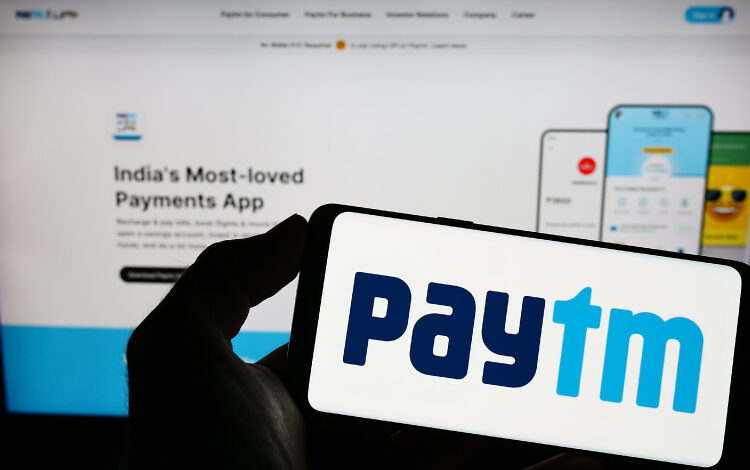Paytm May Shift To Third-Party Payment App Model To Sustain UPI Operations; Can It Make The Change?
In response to regulatory directives, as the Reserve Bank of India mandates changes in basic payment services, Paytm is focusing on the third-party payment app (TPAP) model and is currently in talks with multiple banks to ensure continuity for its vast user base.

As more reports follow on Paytm, in a new move to ensure uninterrupted services for its users, Paytm is set to undergo a significant transition in its approach towards Unified Payments Interface (UPI).
Marking a critical shift in its operational framework; One 97 Communications, the parent company of Paytm, is actively considering adopting the third-party payment app (TPAP) model
As per reports, discussions have already commenced between Paytm and the National Payments Corporation of India (NPCI), the governing body behind the UPI ecosystem.
The shift is necessitated by regulatory directives from the Reserve Bank of India, which mandated Paytm Payments Bank to halt basic payment services, including UPI, effective from February 29.

Looking For A Hand
As Paytm prepares to relinquish its direct UPI operations, it seeks to collaborate with banking partners, potentially including HDFC Bank, Axis Bank, and Yes Bank.
If the talks are successful, these institutions will likely facilitate Paytm’s transition by issuing new virtual payment addresses (VPAs) to its vast user base, thereby ensuring seamless continuity in UPI transactions, just like they are looking to support the nodal accounts of its merchants.
On January 31, the Reserve Bank of India ordered Paytm Payments Bank to stop all basic payment services through various platforms and technology railroads, including UPI, from February 29.
For consumers accustomed to using Paytm for UPI payments, the impending changes may manifest in the form of a shift in their VPAs, from “@paytm” endings to those associated with partnering banks.
Meanwhile, the transition process may introduce additional complexities regarding merchant payments, potentially necessitating fresh know-your-customer (KYC) verifications.
However, for individual consumers, the transition is poised to be relatively straightforward, with the service seamlessly transitioning to the backend without disrupting day-to-day transactions.
Hence, by embracing the TPAP model, Paytm is set to join the ranks of prominent payment platforms such as PhonePe, Google Pay, and Amazon Pay.
Notably, the TPAP route allows Paytm to leverage the expertise and infrastructure of banking partners, streamlining its operations and enhancing the overall user experience.
Moreover, this transition aligns Paytm with the broader ecosystem of 22 TPAPs currently operational within the UPI framework, fostering collaboration and innovation within the digital payments landscape.

More Clarity Needed
While talks of transferring nodal accounts of Paytm merchants to other lenders are underway, the banking entities are awaiting clarifications in the form of detailed FAQs (frequently asked questions) from regulators, particularly in light of recent remarks made by the RBI governor.
The impending issuance of FAQs by the regulator holds significance for Paytm Payments Bank and its merchant base, offering much-needed clarity on procedural nuances and regulatory compliance.
Recent reports indicate that the transition of settlements business to new banks may necessitate fresh know-your-customer (KYC) verifications for the merchant base.
Competiton Sweeps In
Amidst Paytm’s attempts to sustain its banking business, competitors have intensified their efforts to capitalize on potential customer migrations.
PhonePe, for instance, witnessed a notable surge in its user base, a 15-20% surge following the RBI’s notice, reflecting a broader trend of heightened competition within the digital banking sector.
While the transition of customer payment addresses constitutes a backend process, the realignment of payment acceptance infrastructure for merchants poses additional challenges, potentially requiring front-end changes.
The reason is the intricate architectural adjustments necessitated by the shifting banking dynamics, demanding close coordination between banks, the National Payments Corporation of India (NPCI), and Paytm.
However, the transition to third-party lenders poses its own set of challenges, particularly in terms of technological dependencies and scalability concerns.
The reliance on third-party technology backends is susceptible to strain under high payment volumes and stresses the importance of strong infrastructure and contingency planning within the banking ecosystem.
Similarly, recent server challenges faced by multiple banks, resulting in UPI disruptions, emphasise the broader technological vulnerabilities inherent in digital payment systems.
The Last Bit: As Paytm Payments Bank finds itself at the nexus of regulatory scrutiny, competitive pressures, and technological challenges, how well it will be able to manage these significant challenges needs to be seen.
At the same time, Paytm’s strategic pivot towards the TPAP model marks a decisive step towards sustaining its prominence in India’s digital payments domain.




